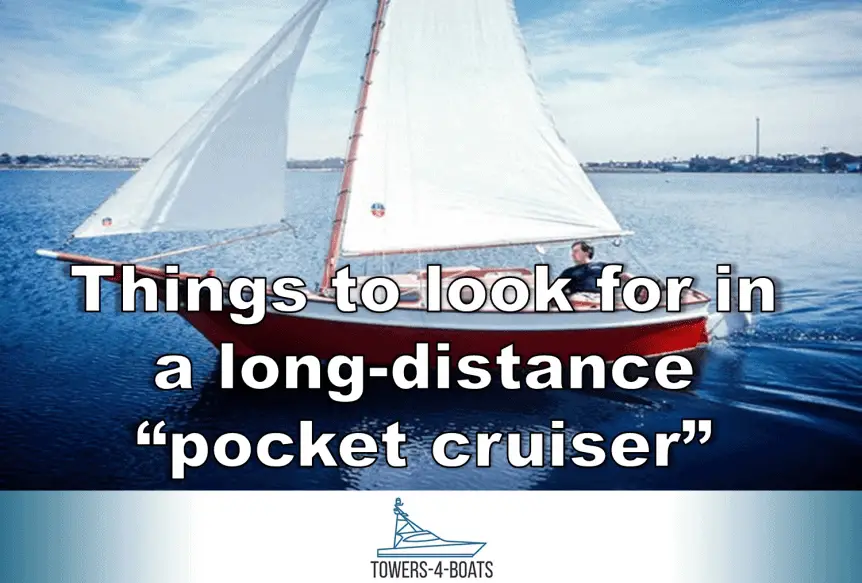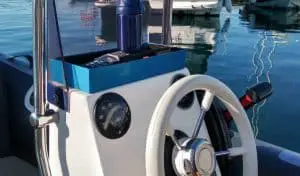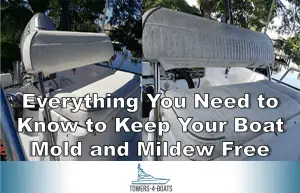Pocket Cruisers–Cruising Small
The advantages of getting a smaller boat make a lot of sense on paper. If you’re looking to take a boat cruising, but are waiting until you can afford the boat of your dreams, small boats give you a way to “go small and go now.”
The good news is that boats come in all shapes and all sizes. If you look around, someone has designed a boat specifically to do what you want to do. There very well might be the perfect boat for you, and there might be smaller options than you think.
A pocket cruiser is a small vessel that accomplishes what most people believe you need a big boat to do. It takes you comfortably on a weekend trip around the bay or a trip of a lifetime around the world. It is smaller than many other boats on the water doing the same thing. Many people choose pocket cruisers because they can be trailerable, which is certainly an option with boats that are under 30 feet long.
Examples of Pocket Cruiser
Pocket cruisers come in any sort of vessel you can imagine. To be considered a pocket cruiser, it should be relatively small, yet have the accommodations that a cruiser needs. Namely, it needs to have a comfortable enclosed sleeping bunk, a head, and some sort of galley arrangement. It needs to carry enough freshwater and fuel to cruise comfortably.
There’s a pocket cruiser for every sort of boater. Many sailboats fit the bill, but plenty of powerboats do too. Whether your dream boat is a sailing catamaran, a stately trawler, or a fast planing express cruiser, there’s a pocket-sized version out there somewhere.
Sailboats can make fun pocket cruisers. Small sailboats often offer the most interior volume for living space since they have displacement hulls and can be a little bit beamy. Some are designed to work on a trailer by giving up their deep heavy keels in favor of a swinging centerboard. Examples include the West Wright Potter 15 and catboats built by Marshall Marine or Com-Pac Yachts. All major sailboat manufacturers, like Hunter, Catalina, and Beneteau, make small 20-odd foot trailer sailers.
Other sailboats are hardcore bluewater boats, like Pacific Seacraft’s Flicka 20 and Dana 24, the Contessa 26, or the Lyle Hess-designed Bristol Channel Cutter 22. These designs may look small, but they are stout and seaworthy. Many have even circumnavigated!
In the powerboat world, you can choose between slow displacement hulls, semi-displacement fast-trawlers, and planning fast boats. Like sailboats, displacement hull boats won’t get you there in a hurry, but they’ll carry a lot of gear and do it efficiently. The Ranger Tug 21EC is an excellent example of a displacement hulled, small-engine powerboat perfect for cruising.
Semi-displacement hulls can power onto their bow wave to get above hull speed, but doing so isn’t very efficient. Still, they can move faster than hull speed, which is helpful when talking about such small boats. Typically called fast trawlers, these boats have a lot of interior space and come in a variety of shapes and sizes. Tug-style boats are popular styles, like the Nordic Tug trawlers and the original Ranger Tug 25, which are both great examples of small boats designed to be cruised over long distances.
If you need a boat that can make over 15 knots, you need a planning hull. Weight and shape become important considerations with these boats, so it’s important to realize that you will have to give up some space and cargo room. Outboard fishing boats with cuddy cabins fit this bill nicely since their cabins often have a few creature comforts, and they usually fit on trailers. Examples include the Grady White walk-around cabin models or the Cutwater line of fast cruisers. Other examples include express cruisers, like Sea Rays and Regals.
How Will You Use the Boat?
When picking any boat, the primary concern should be an analysis of how you will use the boat. Where do you want it to go, and how are you going to get it there? Where are you going to keep it? What activities do you want to do? If you travel aboard, will you stay at marinas or anchor? Do you need to put it on a trailer? All of these little questions need to be answered, and the “must-have” features separated from the “wish it had” ones.
The primary motivator for picking a small boat is the reduction in overall operating costs. If it were just about the size of the vessel and the initial sticker price, you could easily justify buying a much bigger but slightly older boat. You can get enormous yachts for the same cost as some of the nicer pocket cruisers. But the bigger vessels will need more work and upkeep. The advantage of the pocket cruiser is that you can get something much newer and nicer, so you can spend more time boating.
Nearly every cost you encounter when owning a boat is related to its overall length. If a sailboat needs new rigging or new sails, these expenses get bigger and bigger as the vessel gets longer. A smaller boat has a smaller engine, meaning less expensive maintenance and less fuel costs. Storage costs will be reduced. If you can keep your boat on a trailer, storage may even become a non-issue. If you have to store your boat in the water, wet slips are usually priced based on vessel length. If you need to haul your boat out at a boatyard, the haul out will be billed per foot.
All of these dollars total up quickly. A small boat will continue to save you money year after year, whereas a bigger vessel will continue to cost more year after year. So yes, you can buy a 35-foot project motor yacht for $50,000 and put some elbow grease into it. But if you can do what you want with a $70,000 newer 25-foot pocket cruiser, you will save a lot of money in the long run.
Conclusion
All boats represent a compromise in one form or another. Realizing that boating is not about keeping up with the Joneses, but rather getting out on the water and following your dreams, frees you from a lot of things that might have once seemed like limitations. And choosing a pocket cruiser does not mean that you must become a minimalist. Some of these cruisers have all of the comforts of home and everything you need to get out and explore your waterways.




